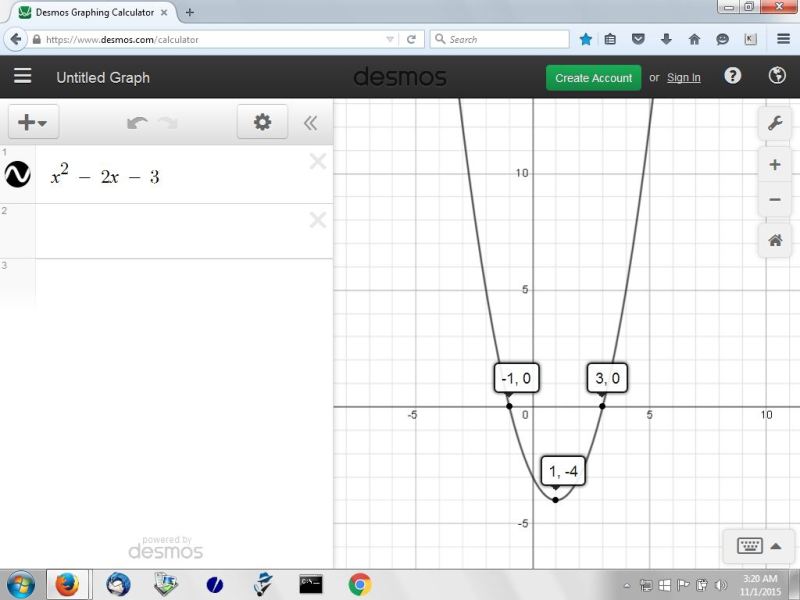|
Question 1000359: Plz help me to explain the range of this equation. {f(x)=1÷x^2-2x-3}
Found 2 solutions by solver91311, Theo:
Answer by solver91311(24713)   (Show Source): (Show Source):
Answer by Theo(13342)   (Show Source): (Show Source):
You can put this solution on YOUR website! the denominator of that equation is x^2 - 2x - 3.
we'll call that g(x).
g(x) is a quadratic equation that can be solved to provide the following information:
the graph crosses the x-axis at x = -3 and x = 1.
the minimum point on the graph is at (1,-4)
the graph is positive from x > - infinity to x < -3.
the graph is negative between x > -3 to x < 1.
the graph goes positive again between x > 1 to x < infinity.
the range of g(x) is all values of y greater than or equal to -4.
f(x) is equal to 1 / g(x).
f(x) is therefore the reciprocal of g(x).
when g(x) is going towards positive infinity, f(x) is going towards 0 from the positive side.
when g(x) is going towards negative infinity, f(x) is going towards 0 from the negative side.
when g(x) is going towards 0 from the positive side, f(x) is going towards positive infinity.
when g(x) is going towards 0 from the negative side, f(x) is going towards negative infinity.
every value of f(x) is going to be equal to 1 divided by every value of g(x).
when g(x) is at -4, f(x) will be at -.25.
the range of f(x) will be all values of y > 0 and all values of y <= -.25.
this can be seen on the graphs.
there are 3 graphs:
first graph is graph of g(x).
second graph is graph of f(x).
third graph is graph of f(x) and g(x) on the same graph.
in the third graph, the values of f(x) and g(x) are shown at x = -3, x = 1, and x = 5, so you can see that the values of f(x) are the reciprocal of the values of g(x) at those values of x.
this occurs at all values of x, but only those 3 values of x are shown for clarity.



|
|
|
| |